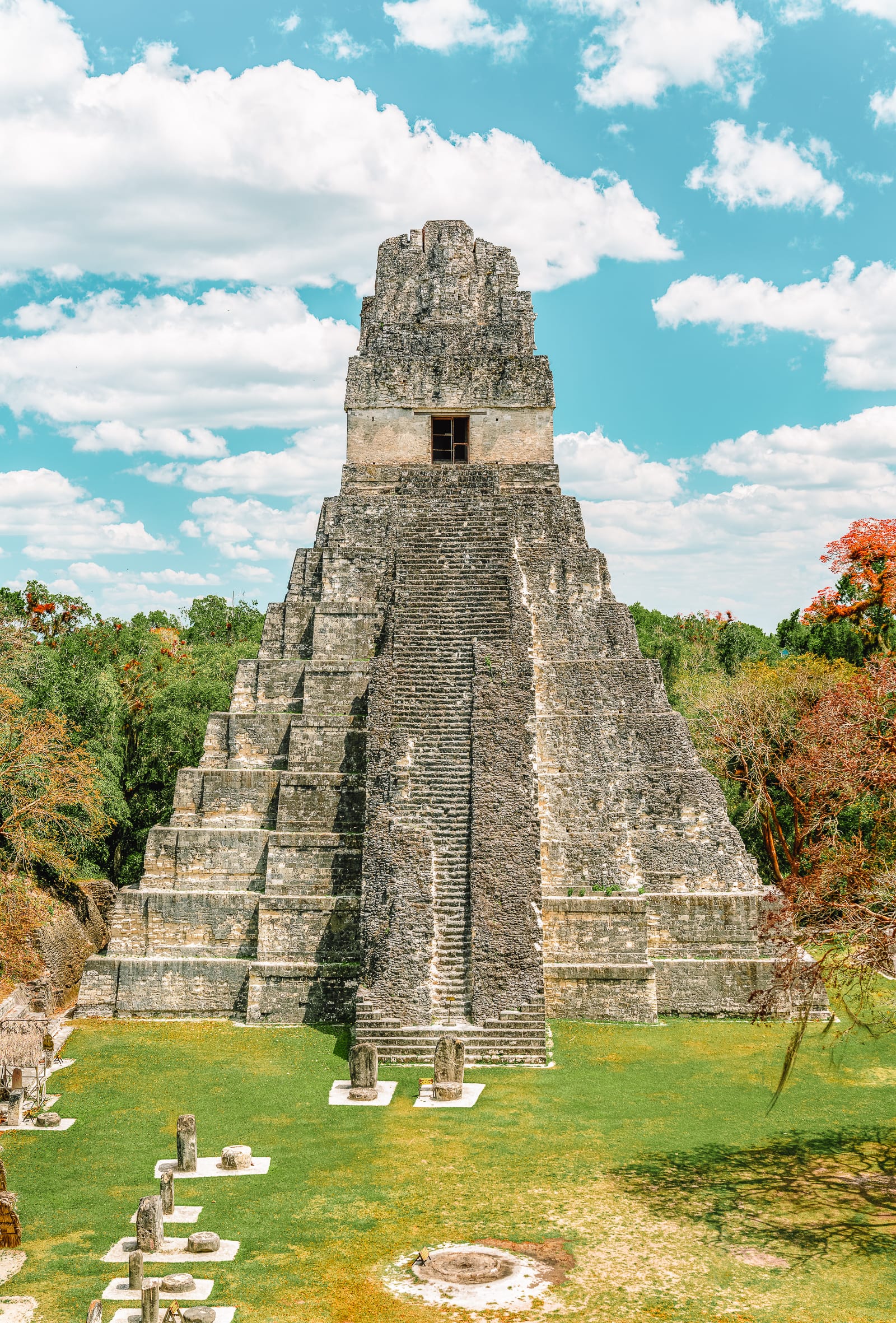 Having travelled Central America for a few months I’d seen my share of ruins. But I’d heard that Tikal, the Guatemala Mayan ruins in a jungle setting were quite a sight to see. I signed up for a sunset tour which was arrived through Los Amigos Hostel. A tour guide picked two shuttle buses worth of people and we made the our journey to Tikal. He told us that this Mayan ruin site would not only be different to other Mayan sites due to its setting but also due to the wildlife we would encounter along the way, and he couldn’t have been more right. This was now my third Mayan sight tour and I had high hopes that this Mayan site would out shine the others.
Having travelled Central America for a few months I’d seen my share of ruins. But I’d heard that Tikal, the Guatemala Mayan ruins in a jungle setting were quite a sight to see. I signed up for a sunset tour which was arrived through Los Amigos Hostel. A tour guide picked two shuttle buses worth of people and we made the our journey to Tikal. He told us that this Mayan ruin site would not only be different to other Mayan sites due to its setting but also due to the wildlife we would encounter along the way, and he couldn’t have been more right. This was now my third Mayan sight tour and I had high hopes that this Mayan site would out shine the others.
Tikal is located in the jungle of northern Guatemala, in Central America. Guatemala Mayan ruins of Tikal are within close proximity to both the Belizean/Guatemalan border and the Mexican/Guatemalan border.
Tikal was once a major Mayan civilisation from the 6th Century AD to the 10th Century AD. It was identified as a mixed UNESCO world heritage site in 1979 for both its natural and cultural heritage features. The rainforest is an explanatory example of an untouched Central American rainforest, which also happens to be the largest rainforest in both Guatemala and Central America.
Tikal is home to several migratory bird species and a number of tree species. The site is also significant as it is an example of a civilisation which evolved from a hunter gather style settlement to an elaborate religious, artistic and scientific culture which finally collapsed in the late 9th century. At the peak of the Tikal civilisation, the settlement had a population of approximately 90,000 with approximately 3,000 buildings. At the same time as the settlement was recognised as a world heritage site, a road was paved from Flores to Tikal making the ruins accessible to tourism.
The Tikal Guatemala Mayan ruins span over 22,100 hectares of rainforest. Like Chichen Itza, this site was a combination of temples and dwellings and zones separating uses. Agricultural uses again being a very important component of the Mayan way of life for a significant period of time. Many lords and kings and even a queen lived in Tikal and many of the temples were built to honour them.
Gran Plaza – Templo I & II
The Gran Plaza is made up of Templo I and II, Templo I could be said to be the iconic temple of the Tikal ruins. Within this temple jade, bone carving, pearls and stung ray spines have been discovered. Mayans commonly used sting rays spines to puncture their tongues to collect blood for sacrifices. It is in this local that special ceremonies were held and attended by the entire Tikal community.
Temple V
This temple set off helicopter radars which puzzled scientists and archaeologists for many years to understand the contents of the temple. Temple V is approximately 60 metres in height and is the second largest temple in the Tikal ruins.
Mundo Perdido
Mundo Perdido is one of the smaller temples of the Tikal ruins and is open to climb, while many of the others have been closed due to death, injury or for preservation and rehabilitation of the temples.
Temple IV
The whole purpose of this tour was to see sunset from the Mayan ruins. Sunrise is usually preferred given that the rise rises over the ruins and it is also when the animals of the rainforest as most active. In this instance, sunset was recommended to us given that in April the cloud makes the sun not visible over the Mayan ruins. For that reason, sunset was recommended given that we would view the sunset with no obstructions. The advice was much appreciated, since we would be required to be on the shuttle bus at 3am for the sunrise tour.
Standing from Temple IV, we watched the sunset, it was an incredible to think that the sunset and sunset have been the only constant over this rainforest and ancient abandoned civilisation for many years. Our guide pointed out that this shot was used in George Lucas’ film Star Wars: Episode IV A New Hope which was released in 1977.
Another interesting thing about Tikal is that some of the temples have been kept in the state they were discovered, covered with soil and trees. From an archaeological point of view, keeping some ruins un touched is important to tell the story of the Tikal ruins but to also preserve the ruins with the hope that better technology in the future may help to further understand more about the Mayan culture and Tikal should further excavations to done in the future.







